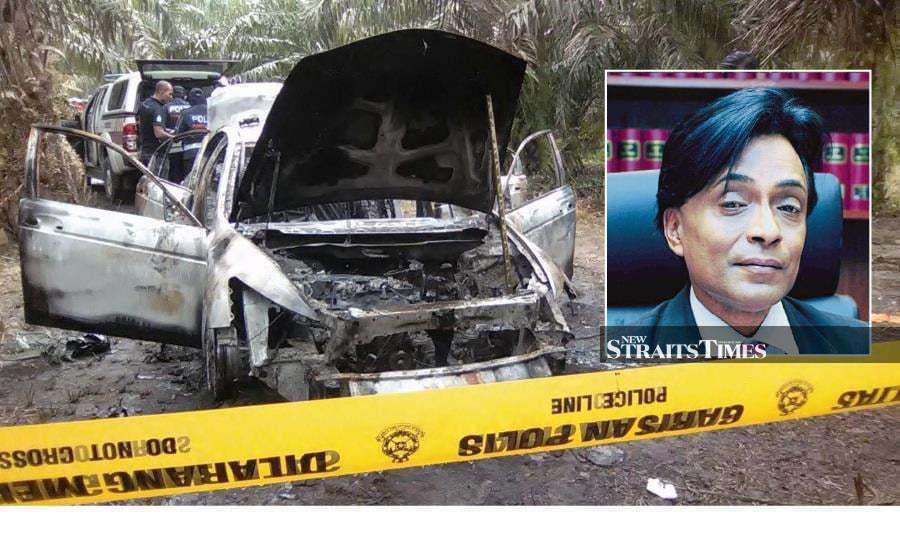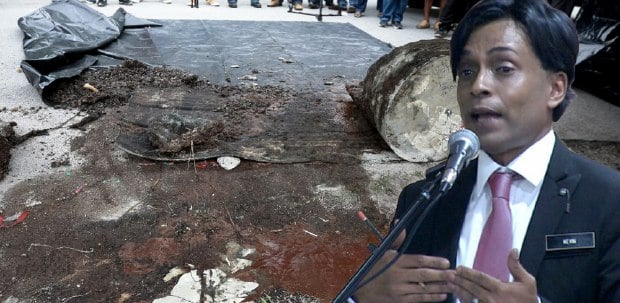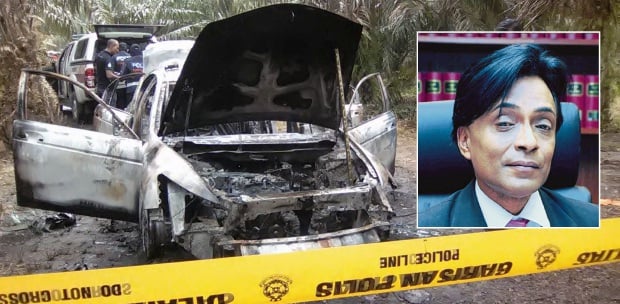PUTRAJAYA: Nine years ago, the nation was stunned by the discovery of a gruesome scene where a body was stuffed inside a drum and filled with cement, which was callously discarded into a watery swamp near Taman Subang Mewah.
The chilling discovery later revealed that the body belonged to prosecutor Datuk Anthony Kevin Morais who was reported missing by his brother on Sept 16, 2015.
According to the facts of the case, Morais was abducted by several men following a fender bender along Jalan Dutamas Raya and taken to No. 1 Jalan USJ1/6D, Subang Jaya on Sept 4.
When the body was discovered, it was fully clothed but without shoes, and hands tied behind using a tie. Seven pressure marks or squeezes were found on the chest, shoulders, and back.
The body, positioned in a fetal position inside a sack tied with wire, was placed into a barrel drum, where cement was poured into it before being thrown into a watery swamp.
Police also found a burnt Proton Perdana near the Kampung Sungai Samak oil palm plantation in Hutan Melintang, Perak, which was the same vehicle driven by Morais.
Speculations and conspiracy theories arose, with some implicating former prime minister Datuk Seri Najib Razak, which he vehemently denied.
This murder case was also featured in the blockbuster Netflix documentary – 'Man on the Run' which tells the story of the 1Malaysia Development Bhd (1MDB) financial saga.
However, it was later revealed during the trial that the mastermind behind the crime was army pathologist Colonel Dr. R. Kunaseegaran, who had ordered six others to carry out the act.
The six others were G Gunasekaran, S Ravi Chandran, R Dinishwaran, A K Thinesh Kumar, M Vishwanath, and S Nimalan.
All of them were charged and pleaded not guilty at the Kuala Lumpur High Court on Jan 7, 2016.
On Dec 20, 2016, the High Court acquitted Gunasekaran after he pleaded guilty and was sentenced by the Sessions Court for the offence of concealing the body and disposing of Morias' car.
During the trial, it was revealed that the motive of the incident was due to Kunaseegaran having emotional and financial problems with the deceased as the latter was the prosecuting officer for corruption cases against the former.
Due to the charges against him, Kunaseegaran faced financial strain, with around RM380,000 in cash frozen, having to post RM20,000 bail, as well as having to cover lawyer's fees.
The High Court on Jan 10, 2020, sentenced all the accused to be executed by hanging, concluding that the defence had not successfully raised reasonable doubt against the prosecution's case.
Today, the Court of Appeal also upheld the High Court's decision against the accused by categorising the case as extraordinary and determining that only the death penalty fits the crime.
Judge Datuk Hadhariah Syed Ismail when reading the judgment said the action of the accused deliberately damaging the deceased's car, kidnapping, and subsequently murdering him indicated that they had pre-planned the method of carrying out this murder.
"They knew where the deceased lived, what time he left his house, the route he took, how the murder was to be carried out, and how many people were needed to execute it.
"We find that this murder was meticulously planned and the condition of the deceased's body when found indicates the brutality of the accused.
"Not content with just murdering the deceased, his car was also set on fire, and his personal belongings were discarded.
"This murder can be categorised as extraordinary compared to ordinary cases. Thus, in our opinion, the punishment that commensurates with the crime committed is the death penalty," she said.






